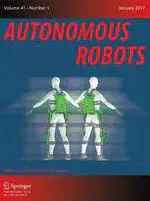In this project, I have investigated the following research questions, in the context of the Foraging Problem (i.e., collecting blocks and bringing them to a central location):
In environments not specifically designed to be amenable to using caches (temporal pickup/drop sites), such as flat, open spaces, can static caches (those at a predetermined location maintained by an outside process) still be used to increase performance? Short answer: yes, long answer: SIMPAR2018.
Swarms have many desirable properties, such as scalability, emergent self-organization, flexibility, and robustness–can these properties be quantitatively measured (as opposed to just observed) ? Short answer: yes, long answer: IJCAI2019, TRO2021.
In environments not specifically designed to be amenable to using caches, can dynamic caches (those which are placed dynamically by robots, and can be created/depleted over time as conditions evolve) be used to improve overall efficiency? Short answer: yes, long answer: AAMAS2020.
Given swarms are typically made of simple agents, how do they collectively act intelligently? I investigate the effect of having swarms allocate tasks from a relational graph on the overall level of emergent intelligence. Short answer: task allocating swarms learn task relationships (as opposed to task) costs; these effects are more visible on more complex task graphs with more tasks and dependencies between tasks. Long answer: AAMAS2020.
Can a Poisson-based model of collective swarm behavior be used to model the behavior of swarms in which robot behaviors are not Poisson distributed? If so , under what conditions? Short answer: yes, IF you have a general first-principle model then can do this in a variety of foraging scenarios for both large and small swarms. Long answer: AURO2023.
This project relies heavily on SIERRA for running experiments and processing results.





